Gangyuan Jing
An Integrated System for Perception-Driven Autonomy with Modular Robots
Dec 13, 2018Abstract:The theoretical ability of modular robots to reconfigure in response to complex tasks in a priori unknown environments has frequently been cited as an advantage and remains a major motivator for work in the field. We present a modular robot system capable of autonomously completing high-level tasks by reactively reconfiguring to meet the needs of a perceived, a priori unknown environment. The system integrates perception, high-level planning, and modular hardware, and is validated in three hardware demonstrations. Given a high-level task specification, a modular robot autonomously explores an unknown environment, decides when and how to reconfigure, and manipulates objects to complete its task. The system architecture balances distributed mechanical elements with centralized perception, planning, and control. By providing an example of how a modular robot system can be designed to leverage reactive reconfigurability in unknown environments, we have begun to lay the groundwork for modular self-reconfigurable robots to address tasks in the real world.
* Published article available at: http://robotics.sciencemag.org/cgi/content/full/3/23/eaat4983?ijkey=iBq7yW7Z8vmjE&keytype=ref&siteid=robotics
Accomplishing High-Level Tasks with Modular Robots
May 01, 2018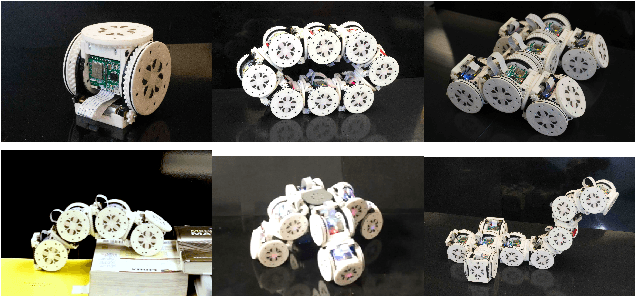
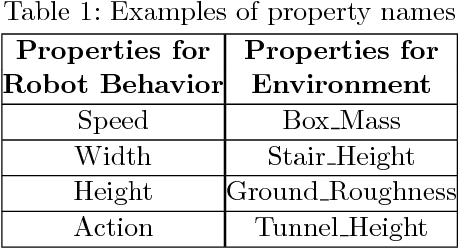
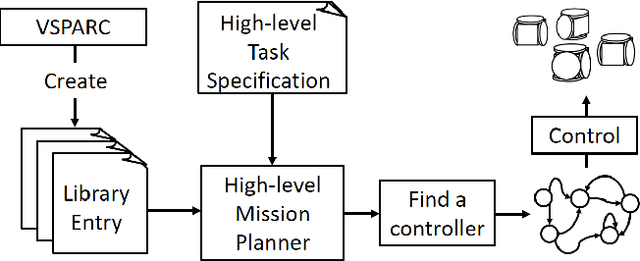
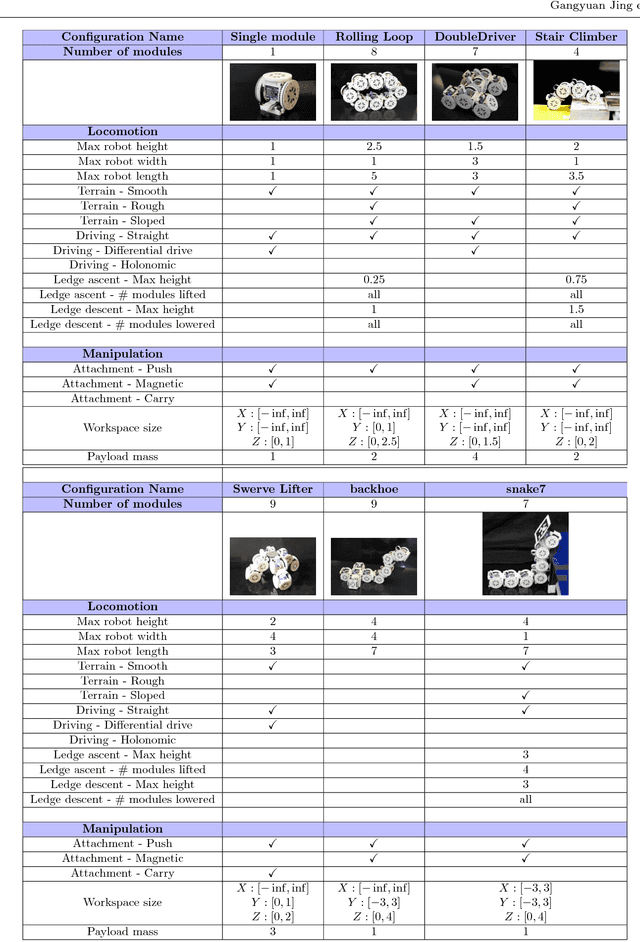
Abstract:The advantage of modular self-reconfigurable robot systems is their flexibility, but this advantage can only be realized if appropriate configurations (shapes) and behaviors (controlling programs) can be selected for a given task. In this paper, we present an integrated system for addressing high-level tasks with modular robots, and demonstrate that it is capable of accomplishing challenging, multi-part tasks in hardware experiments. The system consists of four tightly integrated components: (1) A high-level mission planner, (2) A large design library spanning a wide set of functionality, (3) A design and simulation tool for populating the library with new configurations and behaviors, and (4) modular robot hardware. This paper builds on earlier work by the authors, extending the original system to include environmentally adaptive parametric behaviors, which integrate motion planners and feedback controllers with the system.
Perception-Informed Autonomous Environment Augmentation With Modular Robots
Mar 01, 2018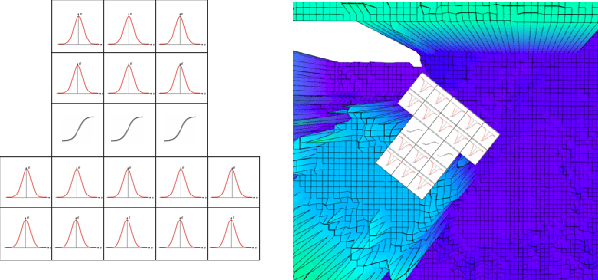


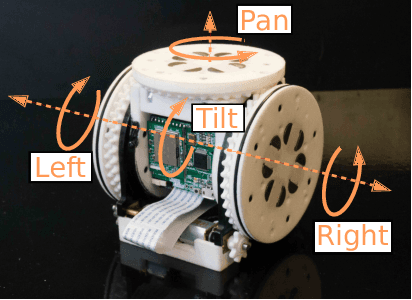
Abstract:We present a system enabling a modular robot to autonomously build structures in order to accomplish high-level tasks. Building structures allows the robot to surmount large obstacles, expanding the set of tasks it can perform. This addresses a common weakness of modular robot systems, which often struggle to traverse large obstacles. This paper presents the hardware, perception, and planning tools that comprise our system. An environment characterization algorithm identifies features in the environment that can be augmented to create a path between two disconnected regions of the environment. Specially-designed building blocks enable the robot to create structures that can augment the environment to make obstacles traversable. A high-level planner reasons about the task, robot locomotion capabilities, and environment to decide if and where to augment the environment in order to perform the desired task. We validate our system in hardware experiments
 Add to Chrome
Add to Chrome Add to Firefox
Add to Firefox Add to Edge
Add to Edge